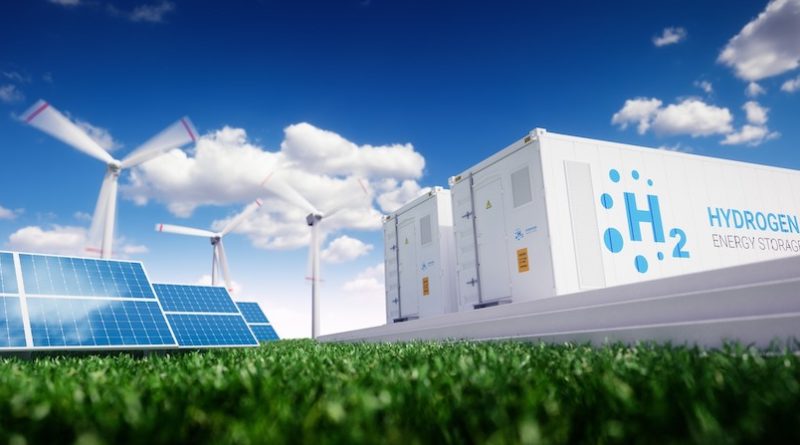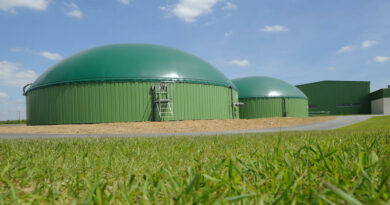
Green Hydrogen – Chances and Challenges for a competitive, sustainable transport sector
As Vice Chair of the European’s Parliament Transport & Tourism Committee I am committed to sup- porting an efficient, intermodal, and sustainable European transport system. Mobility means to me lived freedom; a value that always needs to be maintained. By 2050, the European Union wants to be climate neutral, which means a European economy without net-zero gas emissions. This objective is at the heart of the Green Deal and in line with the EU’s commitment to global climate action under the Paris Agreement. Hydrogen is a promising future and a key building block towards a climate-neutral and zero pollution economy in 2050.
In Europe and around the world, public attention on hydrogen has been growing significantly for the past few months. One driver has been the European Commission’s hydrogen strategy for a climate-neutral Europe, released in July 2020.
This roadmap foresees hydrogen as an intrinsic part of an integrated EU energy system with a strategic objective to install at least 40 GW of renewable hydrogen electrolysers by 2030 and to produce up to 10million tonnes of renewable hydrogen in the EU by the same year. Moreover, almost all Member States included hydrogen in their alternative fuels infrastructure national policy frameworks, with some already adopting national strategies on hydrogen. Hydrogen technology is en vogue.
There is a chance to boost research and innovation, to maintain and to extend Europe’s technical leadership by deploying more production and applications of green hydrogen. The economic effects will be felt through economic growth and an increase in the number of jobs across the entire value chain.
When people talk about hydrogen, they usually talk about so called green hydrogen.
CO2 free Hydrogen, that is generated from renewable energies in a climate-neutral manner. Within my mandate as Member of European Parliament I highly support pushing green hydrogen as an element of future emission-free mobility and for its vital role in the European Union’s energy mix.
After EEA, in 2017, 27% of total EU-28 GHG emissions came from the transport sector (excluding 22% of international aviation and maritime emissions) – a significant increase in the last decade.
In order to reach Europe’s climate targets by 2050, the transport sector must cut GHG emissions by two- thirds, compared with its level in 1990.
This ambitious target can only be realized by acting now, speeding up the deployment of low and zero-emission alternative energy for transport, moving towards zero-emission vehicles and by increasing the efficiency of the transport system overall.
The advantages of hydrogen are clear, it has diverse forms of application. It can be used as feedstock, as a fuel or as an energy carrier and storage. Within the transition of electricity production to renewable energy sources and reduction of GHG emissions, hydrogen has the potential to create added value across industries and sectors. The roadmap of the Commission’s Hydrogen Strategy aims to increase the share of hydrogen in the European Union’s energy mix from 2% today to 13-14% by 2050.
I am convinced that mobility and transport is the first and most important large-scale industries in which hydrogen can be applied. The first electric vehicles with hydrogen and fuel cell drives are already on the market and with respect to the Alternative Fuels Infrastructure Directive the European network of hydrogen filling stations is growing. Its revision should make hydrogen a mandatory fuel on the list for all transport modes and to enable synergies between the Trans-European Transport Network (TEN-T) and the Trans-European Energy Network (TEN-E).
In order to reach a high coverage of refuelling options, considering specificities of infrastructure for heavy- duty vehicles, the European Union urgently needs to adopt a regulatory framework and common technical standards, which can enable interoperability.
An increasingly denser network of filling stations would open up a broader application of hydrogen fuel cell mobility, also with regard to the combustion of (green) hydrogen in conventional internal combustion engines.
Emission-free trains with hydrogen fuel cell drive, such as the Almstom Coradia iLint, have been developed and are already being used in regular operation. Airbus recently presented its ambitions to develop the world’s first zero-emission commercial aircraft by 2035, using hydrogen propulsion. As an alternative or in addition to this, a significant reduction in CO2 can already be achieved in conventional fuel production by adding green hydrogen, comparable to adding biofuels.
So far, the switch of road users from previous combustion engines to electric vehicles with battery technology has largely failed. This is due to the fact that most passenger cars currently available on the market, do not reach desired ranges . This is especially the case for heavy duty vehicles and on long-haul routes. The options for quickly charging purely battery-electric vehicles are also already being discussed, particularly for private use. Hydrogen here, can play a crucial role. Its greening effects and increased availability can help to significantly accelerate a switch to low-emission vehicles in the private sector by to meeting the mobility needs of citizens.
The answer is clear: green hydrogen energy will become a significant pillar of the EU’s future energy system, and is able to reach our ambitious climate-targets. Its varietal usage and numerous possible applications in the transport, industry and the housing sector, will pave the way for decarbonisation. What is key now, is the phased implementation of the European hydrogen strategy. There needs to be a competitive European market for green hydrogen. For this the correct investments in green hydrogen infrastructure and research and development must be made available. Green hydrogen must become a budget priority in programs such as the MFR, Next- GenerationEU and the Recovery & Resilience Facility. The European regulatory framework needs to take a look at the interplay between its economic, industrial and energy policy. I will ensure that European politics do not focus on one single technology, but that all upcoming future legislative proposals stay open to any form of technology and future innovations.




